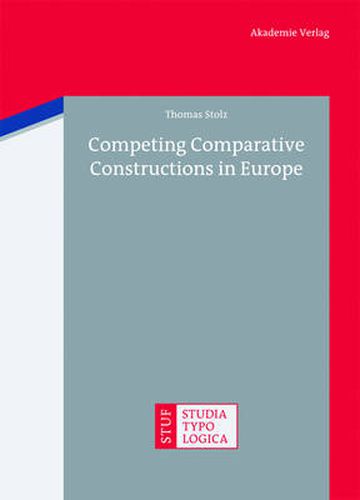Readings Newsletter
Become a Readings Member to make your shopping experience even easier.
Sign in or sign up for free!
You’re not far away from qualifying for FREE standard shipping within Australia
You’ve qualified for FREE standard shipping within Australia
The cart is loading…






This in-depth areal-typological study analyzes the grammatical means which are employed in the languages of Europe to express the comparative of inequality/superiority. The extant theories and hypotheses about the morphosyntactic structure and the cross-linguistic distribution of construction types are reviewed. The behavior of comparatives under the conditions of language contact is discussed. Data from more than 170 standard and nonstandard varieties of European languages are scrutinized systematically. The synchronic picture is complemented by a chapter on the diachrony of comparative constructions. The European facts are compared to those of the geographically adjacent Asian and African regions. It is argued that cross-linguistic investigations must take account also of so-called secondary options. These secondary options suggest strongly that the supposedly dominant role of the particle comparative cannot be upheld for Europe. Moreover, only the secondary options allow us to draw isoglosses which cross the borders between Europe and Asia (and Africa).
$9.00 standard shipping within Australia
FREE standard shipping within Australia for orders over $100.00
Express & International shipping calculated at checkout
This in-depth areal-typological study analyzes the grammatical means which are employed in the languages of Europe to express the comparative of inequality/superiority. The extant theories and hypotheses about the morphosyntactic structure and the cross-linguistic distribution of construction types are reviewed. The behavior of comparatives under the conditions of language contact is discussed. Data from more than 170 standard and nonstandard varieties of European languages are scrutinized systematically. The synchronic picture is complemented by a chapter on the diachrony of comparative constructions. The European facts are compared to those of the geographically adjacent Asian and African regions. It is argued that cross-linguistic investigations must take account also of so-called secondary options. These secondary options suggest strongly that the supposedly dominant role of the particle comparative cannot be upheld for Europe. Moreover, only the secondary options allow us to draw isoglosses which cross the borders between Europe and Asia (and Africa).